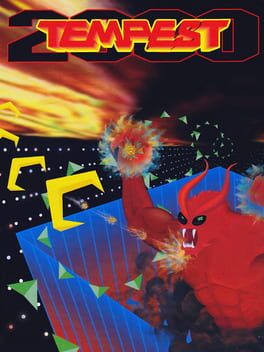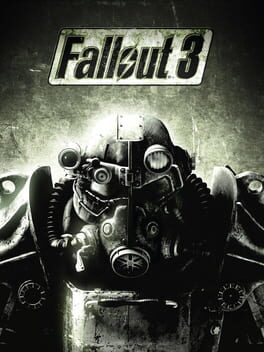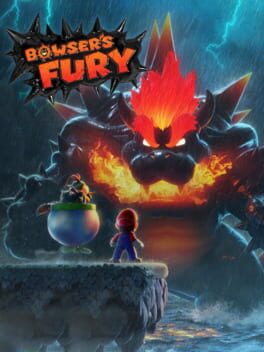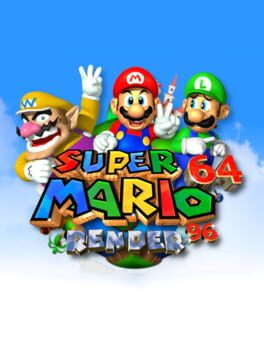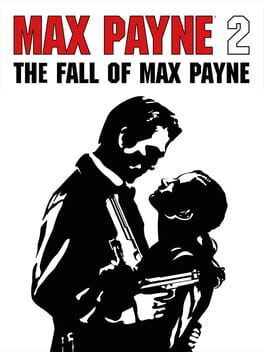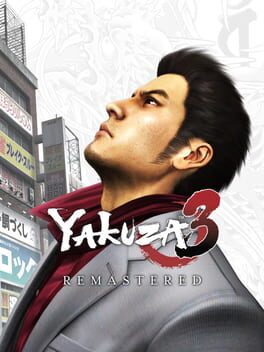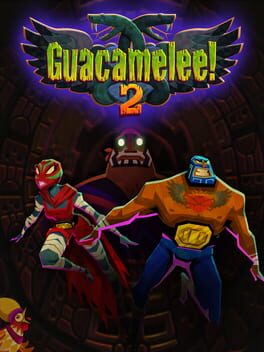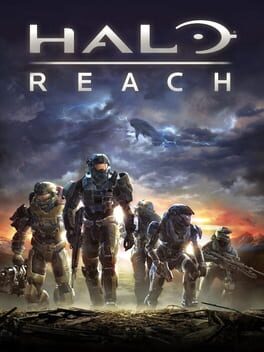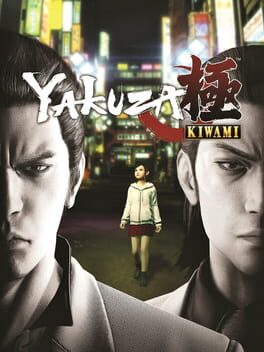triales
BACKER
2018
Effective in so much its core sensory experience rather than as a narrative on grief. The latter aspect being considered critical (as brought up in the game’s marketing and positive/negative reactions to the actual game) is strange because I do not think it registers in any method where it significantly impairs or uplifts the experience. Rather, it is something that is occasionally gestured to but never capitalized on, making it feel as if it were added last-minute to the narrative. The five stages of grief structure to the narrative, for example is not something deeply woven into each level, but only existing as a peripheral analogy alluded to with color and broken buildings. I also find it somewhat questionable to find agreement in the developers’ idea of the main character’s inability to jump or walk cleanly at the intro as a “shocking” experience that is deeply resonating in regard to depicting the character’s mental health.
I do not write this to ultimately claim that the game was not built on the theme of mourning in the first place (especially considering the sincerity found here overall). Rather, it calls into attention how much media language surrounding mental health remains limited and often vague without a deeper understanding of how to truly elaborate on individual struggles. I think trying to incorporate universality and linearity in depicting mental health in games such as this, as much as it is a noble intention in attempting to find resonance with as many players as possible, ultimately kills any potential for creating a powerful artistic product. Grief and depression as abstract ever-shifting black creatures that are “defeated” (see Sea of Solitude as another example of this) is a kind of idea attached to the broader structure of gaming: conquer the levels, defeat the boss and save the day. Even as developers attempt to not explicitly depict depression as something that is “cured” in material like this (and I believe they are sincerely attempting to make sure this does not occur), the structure of something like Gris prevents looking at mourning from a more holistic (or life-long) context and instead only does so as an immediate crisis resolved linearly. Perhaps this is something that does apply to some people who have gone through this, and it’s good if something like this relates to them. However, the limits of this structure remain clear to those whose issues cannot be treated in a manner as Gris does.
It’s especially clear seeing how limited Gris’s language is in regard to mental health in comparison to its competence as a platformer. As much as there are mechanical limits to what can be made under a structure which does not desire for frustration on behalf of the player, the limitations also feel matching to the aforementioned sensory experience. What is enriching to Gris is not so much the intended thematic ideas but rather the underlying flow of being subsumed into the watercolor environments. This flow, though, almost never really matches the game’s themes outside of key moments related to the “creature” of depression; to a degree, the lack of tension is what perhaps hollows out any intended thematic depth. The dissonance showcases the ultimate challenge of attempting to integrate aspects of mental health into gaming, a kind of challenge that I ultimately don’t have any answers to other than to consider paths besides universality.
I do not write this to ultimately claim that the game was not built on the theme of mourning in the first place (especially considering the sincerity found here overall). Rather, it calls into attention how much media language surrounding mental health remains limited and often vague without a deeper understanding of how to truly elaborate on individual struggles. I think trying to incorporate universality and linearity in depicting mental health in games such as this, as much as it is a noble intention in attempting to find resonance with as many players as possible, ultimately kills any potential for creating a powerful artistic product. Grief and depression as abstract ever-shifting black creatures that are “defeated” (see Sea of Solitude as another example of this) is a kind of idea attached to the broader structure of gaming: conquer the levels, defeat the boss and save the day. Even as developers attempt to not explicitly depict depression as something that is “cured” in material like this (and I believe they are sincerely attempting to make sure this does not occur), the structure of something like Gris prevents looking at mourning from a more holistic (or life-long) context and instead only does so as an immediate crisis resolved linearly. Perhaps this is something that does apply to some people who have gone through this, and it’s good if something like this relates to them. However, the limits of this structure remain clear to those whose issues cannot be treated in a manner as Gris does.
It’s especially clear seeing how limited Gris’s language is in regard to mental health in comparison to its competence as a platformer. As much as there are mechanical limits to what can be made under a structure which does not desire for frustration on behalf of the player, the limitations also feel matching to the aforementioned sensory experience. What is enriching to Gris is not so much the intended thematic ideas but rather the underlying flow of being subsumed into the watercolor environments. This flow, though, almost never really matches the game’s themes outside of key moments related to the “creature” of depression; to a degree, the lack of tension is what perhaps hollows out any intended thematic depth. The dissonance showcases the ultimate challenge of attempting to integrate aspects of mental health into gaming, a kind of challenge that I ultimately don’t have any answers to other than to consider paths besides universality.
1994
A core test of visual processing and withstanding information overload that is built not only into Tempest's core framework of tube shooting, but also into its proto-Y2K aesthetic. The aesthetic on its own is an inconvenience for a game such as Tempest; unlike Tetris Effect, which also adds an aesthetic aiming for spectacle, the proto-Y2K aesthetic here does not act as a visual layer underlying the core model to induce a "trance" state, but is instead more explicit and overwhelms the player's visual line with a slurry of neon explosions and score announcement pop-ups. Tempest's original arcade version also dealt with information overload, but was made somewhat manageable by default given the simplistic wireframe textures and lack of non-diagetic visual elements that may have been displayed with the player's achievements. Here, visual overload cannot be avoided and can only be combatted in the moment by the matter of the player's gradually improving visual discrimination. Although the spectacle here perhaps betrays the appeal of the original Tempest's minimalism, it also creates a continual duel between the impulse to give in to spectacle and the need to ignore such "distractions" in order to identify and eliminate targets. Aesthetic, here, acts as the lure and the weapon against the player.
2008
Competent in establishing a ghostly east coast Americana (as one would hope), but falls apart when attempting to zoom in on any stronger narrative strand. Bethesda comes off as apathetic towards truly establishing a macroscale narrative to grasp on to in regard to empowering the self-insert protagonist's autonomy and motivation to reshape the Capitol Wasteland. Heritability looms over the main story with much of what drives the player's exploration being hints towards answers as to the nature of your existence--where you were actually born, how much you truly are in the shadow of another, why you were kept miles away from the truth, etc.--but you never walk away as a character that grew up with a father who cared for you over decades, with James's dialogue being largely restricted to small passages over his technological goals for the Capitol Wasteland and grief for a love whose face is left a mystery (at least up until New Vegas).
So much of the main story being apathetically built on heritability is perhaps what dooms it: the past, where James heavily looms over as a parental figure motivating much of your decision-making, is collapsed into three sections built solely of character creation and tutorials to their name while being broken up by title cards as the only gesture towards a longer temporal span with little of who you were or are now to be gleaned from these elliptical interludes. Meanwhile, the future denies your narrative footprints to be truly weightful enough in comparison to your father's shadow that you continue to live under. The ending cards more clearly outline the flaws of the "future" here: those who walk the Capitol Wasteland cannot express their future in their own words, and their faces can only be deployed as the stinger to the list of good deeds or sins, respectively, honoring or tainting your family tree that the narrator speaks from. You don't truly "influence" the Wasteland; your legacy is built off of how much you truly respected the forces who helped bring you into the Wasteland.
Much more can be said about the heavily flawed DLC, especially when weighed in comparison to New Vegas. Operation Anchorage displays Bethesda's worst instincts in comedy with none of post-apocalyptic America to act as the contrast to jingoistic military propaganda, while Mothership Zeta only desires to make a mockery out of sci-fi with little punchlines to draw from outside of alien gibberish. The Pitt and Point Lookout fare better in emphasizing the Capitol's relative optimism in comparison to what's outside of its boundaries for those unluckier, but finding anything to establish the political structures that led to the outcomes within these add-on cities is a stretch (the latter being somewhat more successful here). Broken Steel is a half-written apology for those disappointed by the base game preventing them from seeing their footprints in their brought upon Wasteland, with its goal only serving to act as a rushed drive towards final domination via energy weaponry. None of what's found here, even in the best case of Point Lookout, can match up to New Vegas's engaging explorations of the wider west coast, whether in Dead Money with its paranormal holograms haunting the skeletons of the Sierra Madre or in Honest Hearts drawing the persistent threat of colonization into a post-apocalyptic America.
I can't fully bring myself to work against what exists here. Fallout, as a concept, rarely fails to allure the player into exploring the gestures towards another America that lived full lives in your footsteps before disappearing in a flash, whether in the emptied out diners or dormant Metro robots waiting to be awoken from their mechanical slumber again. However, it would be hard to deny the disappointment brought upon by Bethesda's narrative failures, with Obsidian's future work in the series existing at the edges as the force that only truly realizes what could compose a 3D Fallout. Before that, though, is work left unfinished and only a sandbox for you to click on heads in V.A.T.S with.
So much of the main story being apathetically built on heritability is perhaps what dooms it: the past, where James heavily looms over as a parental figure motivating much of your decision-making, is collapsed into three sections built solely of character creation and tutorials to their name while being broken up by title cards as the only gesture towards a longer temporal span with little of who you were or are now to be gleaned from these elliptical interludes. Meanwhile, the future denies your narrative footprints to be truly weightful enough in comparison to your father's shadow that you continue to live under. The ending cards more clearly outline the flaws of the "future" here: those who walk the Capitol Wasteland cannot express their future in their own words, and their faces can only be deployed as the stinger to the list of good deeds or sins, respectively, honoring or tainting your family tree that the narrator speaks from. You don't truly "influence" the Wasteland; your legacy is built off of how much you truly respected the forces who helped bring you into the Wasteland.
Much more can be said about the heavily flawed DLC, especially when weighed in comparison to New Vegas. Operation Anchorage displays Bethesda's worst instincts in comedy with none of post-apocalyptic America to act as the contrast to jingoistic military propaganda, while Mothership Zeta only desires to make a mockery out of sci-fi with little punchlines to draw from outside of alien gibberish. The Pitt and Point Lookout fare better in emphasizing the Capitol's relative optimism in comparison to what's outside of its boundaries for those unluckier, but finding anything to establish the political structures that led to the outcomes within these add-on cities is a stretch (the latter being somewhat more successful here). Broken Steel is a half-written apology for those disappointed by the base game preventing them from seeing their footprints in their brought upon Wasteland, with its goal only serving to act as a rushed drive towards final domination via energy weaponry. None of what's found here, even in the best case of Point Lookout, can match up to New Vegas's engaging explorations of the wider west coast, whether in Dead Money with its paranormal holograms haunting the skeletons of the Sierra Madre or in Honest Hearts drawing the persistent threat of colonization into a post-apocalyptic America.
I can't fully bring myself to work against what exists here. Fallout, as a concept, rarely fails to allure the player into exploring the gestures towards another America that lived full lives in your footsteps before disappearing in a flash, whether in the emptied out diners or dormant Metro robots waiting to be awoken from their mechanical slumber again. However, it would be hard to deny the disappointment brought upon by Bethesda's narrative failures, with Obsidian's future work in the series existing at the edges as the force that only truly realizes what could compose a 3D Fallout. Before that, though, is work left unfinished and only a sandbox for you to click on heads in V.A.T.S with.
2021
An interesting experiment in introducing an unsegmented open-world format to the series, but doesn’t indicate any ease in being able to reproduce itself in a wider-scale entry. The presence of Fury Bowser, at least in its concept, hints towards a successful method in amplifying the tension of platforming as that the player is forced to, for example, speed up their movement in order to escape Bowser’s flame. Yet, the movement mechanics don’t fully support such a goal with the long jump’s physics being strikingly reduced to a short bunny hop and the lack of a backwards hop. The ambitions for Bowser, then, turn into a more trivial task of seeking out cover and waiting for his “fury” phase to recede.
This issue is somewhat mitigated in the presence of fury blocks that are meant to unlock shines since the player is forced to risk being damaged in order to gain access to locked areas. Yet, this introduces a bigger problem to the series in that the natural environmental curiosity that its antecedents encourage the player to capitalize on, both in the 2D and 3D formats, is damaged with the presence of a time-gated unlock system. To frame this issue directly, the player is forced to ask themself: “Do I want to explore another area? Or should I wait out for Bowser so I can gain access to a shrine where I am at now so I don’t miss out on it?” This situation introduces an unnatural structure to the series where the player, instead of finding possibilities with each open pathway or hidden corner, is forced to potentially avoid acting on their curiosity after calculating a risk-reward ratio.
Bowser’s fury phase is an admirable attempt to make the 3D Mario platformer even more open-ended via introducing uncertainty to completing levels “as-is”. However, any mechanic which discourages natural curiosity in environmental exploration is against what makes up the core of the Mario platformer (found even in its most linear entries via the presence of pipes, for example). If this were to be viewed as a prototype for a future 3D Mario, work is required to introduce uncertainty in another method while not forgoing the joy of continual discovery that is necessary for the series to function.
This issue is somewhat mitigated in the presence of fury blocks that are meant to unlock shines since the player is forced to risk being damaged in order to gain access to locked areas. Yet, this introduces a bigger problem to the series in that the natural environmental curiosity that its antecedents encourage the player to capitalize on, both in the 2D and 3D formats, is damaged with the presence of a time-gated unlock system. To frame this issue directly, the player is forced to ask themself: “Do I want to explore another area? Or should I wait out for Bowser so I can gain access to a shrine where I am at now so I don’t miss out on it?” This situation introduces an unnatural structure to the series where the player, instead of finding possibilities with each open pathway or hidden corner, is forced to potentially avoid acting on their curiosity after calculating a risk-reward ratio.
Bowser’s fury phase is an admirable attempt to make the 3D Mario platformer even more open-ended via introducing uncertainty to completing levels “as-is”. However, any mechanic which discourages natural curiosity in environmental exploration is against what makes up the core of the Mario platformer (found even in its most linear entries via the presence of pipes, for example). If this were to be viewed as a prototype for a future 3D Mario, work is required to introduce uncertainty in another method while not forgoing the joy of continual discovery that is necessary for the series to function.
1998
Maddening and menial at times, but the helplessness of it is mesmerizing to a degree where its blemishes can almost be overridden. Audio design is a specific technical feature to this in that it influences the perceived helplessness; "crunchy" textures underlie the Houndeye's sonic windups and the Vortigaunt's lightning strikes, among other events, to form loud, indistinguishable sensory overload among crowds of enemies that can only be responded to with uncalculated shotgun blasts and long jumps. Being faced with enemy hordes in a first-person framing is not an innovation here (DOOM and Quake, of course, being inspirations) but, unique to its antecedents, there is a difficultly shaking off a feeling that for all of the experimental weapons to vaporize others with, Freeman's (or, rather, the self-insert for the player's confusion and franticness to be projected onto) lack of preparation is clear as day.
Xen, perhaps contrary to wideheld negative views among those surprised by its sudden shift in environmental curation (or, rather, a perceived lack of), suceeds in some ways to enhance helplessness giving the scarcity of its space with enemy crowds being the only ones to fill it. The gift of the Long Jump Module messages to the player that, similar to DOOM and alike, speed and momentum are the only antidotes to the bullseye that is Freeman in such a wide empty space as Xen's outside with a lack of companions to be found. However, the internals of Xen, specifically starting within Interloper, finds itself beset with a slippery physics engine that transforms platforming into a tedious task with little room for error or enjoyment to be found in pulling off such platforming. Jumps via the Xen Trampoline feel scattershot with trial-and-error required to understand how exactly to manipulate the GoldSrc engine's idea of momentum in order to find success in reaching far platforms, which especially makes the final boss fight almost a test of luck.
The limits of GoldSrc are worth re-emphasizing here given its quirks also creating potential frustration outside of Xen. Simple tasks such as moving crates backwards or sideways, for example, become unintuitive as a result of GoldSrc wildly pulling crates outside of the player's grasp. At certain points, Freeman may stick to corners while in cover from enemy gunfire which forces the player to reload their last save. Even moving can become a strange task at times due to Freeman's speed, which can prove tricky with areas that require almost pinpoint precision in navigating tight areas with deep depths.
Still, the franticness of moving through Black Mesa and Xen almost snuff out residual exhaustion from such engine frustrrations once they are dealt with. The aforementioned influence from iD Software gameplay is effectively recontextualized in a horror framing that frames combat as a last-measure tool which barely ensures survival rather than as a confident source of energy for the player's mindset. Shotgun blasts spread through Xen not as a measured signal of dominance, but rather as almost minute threats to an ecosystem at the brink of spreading its tentacles into Earth's vents and dams.
Xen, perhaps contrary to wideheld negative views among those surprised by its sudden shift in environmental curation (or, rather, a perceived lack of), suceeds in some ways to enhance helplessness giving the scarcity of its space with enemy crowds being the only ones to fill it. The gift of the Long Jump Module messages to the player that, similar to DOOM and alike, speed and momentum are the only antidotes to the bullseye that is Freeman in such a wide empty space as Xen's outside with a lack of companions to be found. However, the internals of Xen, specifically starting within Interloper, finds itself beset with a slippery physics engine that transforms platforming into a tedious task with little room for error or enjoyment to be found in pulling off such platforming. Jumps via the Xen Trampoline feel scattershot with trial-and-error required to understand how exactly to manipulate the GoldSrc engine's idea of momentum in order to find success in reaching far platforms, which especially makes the final boss fight almost a test of luck.
The limits of GoldSrc are worth re-emphasizing here given its quirks also creating potential frustration outside of Xen. Simple tasks such as moving crates backwards or sideways, for example, become unintuitive as a result of GoldSrc wildly pulling crates outside of the player's grasp. At certain points, Freeman may stick to corners while in cover from enemy gunfire which forces the player to reload their last save. Even moving can become a strange task at times due to Freeman's speed, which can prove tricky with areas that require almost pinpoint precision in navigating tight areas with deep depths.
Still, the franticness of moving through Black Mesa and Xen almost snuff out residual exhaustion from such engine frustrrations once they are dealt with. The aforementioned influence from iD Software gameplay is effectively recontextualized in a horror framing that frames combat as a last-measure tool which barely ensures survival rather than as a confident source of energy for the player's mindset. Shotgun blasts spread through Xen not as a measured signal of dominance, but rather as almost minute threats to an ecosystem at the brink of spreading its tentacles into Earth's vents and dams.
2007
Hazy, even with its most linear level design out of the 3D series and without forgoing a melodramatic framing. A planet with flourishing fauna can arise in a blink of an eye, with different worlds existing not solely miles apart via interstellar traversal, but also 90 or 180 degrees away on the same ground. The presence of a children's fable story which underlies the found environments follows with this structure; the implicit childhood desire to make the macroscale a comprehensible being (the results being, of course, heavily subjective) is replicated across almost all possible channels, whether in its contextualization of the cosmos as simply human-like beings filled with wanderlust or finding the possibility of the cosmos only possible via a curious child who stumbled into her role almost by accident.
Yet, such simplification does not remove, but, rather, enhances the operatic scale that is present here. The pinpoint curation to how these levels are experienced may never be found in a 3D Mario again (barring Galaxy 2) with Odyssey returning to 64’s open-ended structure while also removing task (or, star) separation via a level select screen. Although not the first time linearity has been found in a 3D Mario (as Pangburn would point to in Sunshine’s fledgling level design), linearity is capitalized on to an unprecedented degree relative to its predecessors, with it enabling fly-through sequences under arching waves of fire and pulsating violins in the tail of lock-on bullets. Even as planets are often scaled into miniature and comprehensible worlds where almost every square foot can be combed, they only reinforce the player being themselves a miniature speck within the galaxy subject to gravity's whims. Myth, though making the cosmos a supposed tangible phenomena that can be grasped, creates ellipses for, among other questions, what history underlies each planet in a galaxy (perhaps, a Luma's life), when will such galaxies meet their inevitable limits before they are left irrevocably changed, and how such changes will present themselves. What is then found here proves to be a unique sensory experience coming off as almost lightning in a bottle, where childhood wander that simplified yet exploited the operatic dramatics of the unknown is replicated for a brief moment before then disappearing in a flash under a blinding supernova and morphed into another everyday reality.
Welcome, new galaxy!
Yet, such simplification does not remove, but, rather, enhances the operatic scale that is present here. The pinpoint curation to how these levels are experienced may never be found in a 3D Mario again (barring Galaxy 2) with Odyssey returning to 64’s open-ended structure while also removing task (or, star) separation via a level select screen. Although not the first time linearity has been found in a 3D Mario (as Pangburn would point to in Sunshine’s fledgling level design), linearity is capitalized on to an unprecedented degree relative to its predecessors, with it enabling fly-through sequences under arching waves of fire and pulsating violins in the tail of lock-on bullets. Even as planets are often scaled into miniature and comprehensible worlds where almost every square foot can be combed, they only reinforce the player being themselves a miniature speck within the galaxy subject to gravity's whims. Myth, though making the cosmos a supposed tangible phenomena that can be grasped, creates ellipses for, among other questions, what history underlies each planet in a galaxy (perhaps, a Luma's life), when will such galaxies meet their inevitable limits before they are left irrevocably changed, and how such changes will present themselves. What is then found here proves to be a unique sensory experience coming off as almost lightning in a bottle, where childhood wander that simplified yet exploited the operatic dramatics of the unknown is replicated for a brief moment before then disappearing in a flash under a blinding supernova and morphed into another everyday reality.
Welcome, new galaxy!
The technical minutes of a remaster like this, primarily the addition of 60 fps, provides an oddly significant reinforcement of the original gameplay mechanisms that many other remasters of this level don't often contribute (righteously in most cases given the precariousness of preserving original elements) for other games. Although the possibilities of the movement system are also found in the Nintendo 64 version, 60 fps, perhaps in some ways placebo, comes off as a a direct request to the player to take risks in and embrace enemy or platform encounters via side flips or triple jumps. It, then, further contrasts the structure of the original against the modern class of 3D platformers which often limit its movement possibilities to a double jump (or, in some cases, double jump and hover) model. Although this should not necessarily be considered a "regression" given the necessities of, say, Psychonauts 1/2 to express its themes in a more guided and linear fashion, what is found here exemplifies a profoundly complex relationship between movement and level design which, even today, is rarely matched. Each level pathway, even though carefully designed and meant to explicitly signal in certain cases the necessity of using advanced movement, comes across as shortcuts found out of personal experimentation which feel like secrets not meant to be shared.
The level redesigns promised in marketing materials ask a bigger question of what a blend of classic and modern visuals should appear in the generation of ray tracing, which I can't answer with personal experience since I preferred to go with the original level textures (as the new textures are, for now, unfinished). Yet, passively observing the new environments still finds a bucking of re-release traditions in either remaking games from scratch or remastering assets without providing a major visual overhaul. In the case of render96, environments adhere to the look of Super Mario 64 render materials provided in 90s gaming magazines, primarily a plastic, yet "realistic" apperance with ray tracing adding reflections and detailed shadows. An analogy for this classic-modern visual blend may be "retro HD" JRPGs such as Octopath Traveler. However, whereas the framing of Octopath's graphics perhaps comes from a desire to refresh JRPGs for a new generation unaccostomed to their antecedents, with god rays and shadows that dominate appearance over 16 bit sprites, render96 desires to visit rose-tinted memories of game and gameplay, memories which often blended the stark amount of suspension of disbelief within childhood and marketing materials which promised revolutions in digital realities, and "realize" such memories. The polygonal and low-res textures of some environments aren't forgone even when placed alongside pinpoint shadow and lighting texture, almost as if going an inch forward in fidelity would dissolve the realistic-plastic world that, to the mind, is the closest to engaging in a simulacra of childhood daydreams. What's seen creates a sense of wonder regarding if future remasters, including those that will be made after numerous fan decompilations are completed, should, instead of "updating" their visual appearance, look at the implicit desire to find Gestalt in polygonal textures and leave such Gestalt in place even as the gap feels almost inches away from being closed.
The level redesigns promised in marketing materials ask a bigger question of what a blend of classic and modern visuals should appear in the generation of ray tracing, which I can't answer with personal experience since I preferred to go with the original level textures (as the new textures are, for now, unfinished). Yet, passively observing the new environments still finds a bucking of re-release traditions in either remaking games from scratch or remastering assets without providing a major visual overhaul. In the case of render96, environments adhere to the look of Super Mario 64 render materials provided in 90s gaming magazines, primarily a plastic, yet "realistic" apperance with ray tracing adding reflections and detailed shadows. An analogy for this classic-modern visual blend may be "retro HD" JRPGs such as Octopath Traveler. However, whereas the framing of Octopath's graphics perhaps comes from a desire to refresh JRPGs for a new generation unaccostomed to their antecedents, with god rays and shadows that dominate appearance over 16 bit sprites, render96 desires to visit rose-tinted memories of game and gameplay, memories which often blended the stark amount of suspension of disbelief within childhood and marketing materials which promised revolutions in digital realities, and "realize" such memories. The polygonal and low-res textures of some environments aren't forgone even when placed alongside pinpoint shadow and lighting texture, almost as if going an inch forward in fidelity would dissolve the realistic-plastic world that, to the mind, is the closest to engaging in a simulacra of childhood daydreams. What's seen creates a sense of wonder regarding if future remasters, including those that will be made after numerous fan decompilations are completed, should, instead of "updating" their visual appearance, look at the implicit desire to find Gestalt in polygonal textures and leave such Gestalt in place even as the gap feels almost inches away from being closed.
This review contains spoilers
This is love. When someone, no matter the cost, shows you there is hope, a choice that you can put down the gun.
More instinctive than the cold detective noir of the original. Payne runs on fear and painkillers, with every pulse of hesitation only delivered with a bullet lodged in his brain near-death. His infatuation with Sax is a desire to finally escape the role he has involuntarily taken on as a noir hero, enforced through the warning of ignoring free ammo on TV or in the Address Unknown funhouse where identity is erased under spinning columns and cut-out scientists and police finding a conspiratorial core to the city that can only be responded to with paranoia-fueled gunshots. Such desire is near-realized before snuffed out, with the only reality being a flight-or-fight reaction awaiting at every corner and the hope of another doomed angel from above descending someday.
More instinctive than the cold detective noir of the original. Payne runs on fear and painkillers, with every pulse of hesitation only delivered with a bullet lodged in his brain near-death. His infatuation with Sax is a desire to finally escape the role he has involuntarily taken on as a noir hero, enforced through the warning of ignoring free ammo on TV or in the Address Unknown funhouse where identity is erased under spinning columns and cut-out scientists and police finding a conspiratorial core to the city that can only be responded to with paranoia-fueled gunshots. Such desire is near-realized before snuffed out, with the only reality being a flight-or-fight reaction awaiting at every corner and the hope of another doomed angel from above descending someday.
2018
This review contains spoilers
The microscale and the macroscale narratives never integrate into one another with the need to balance and finish both in 12 chapters attempted to be solved by quick, clean solutions that are superficial and absolve much of any potential tension. The orphanage isn't at risk of closing from a lack of money; it's all a misunderstanding. Militarization and the accompanying globalization of Okinawa doesn't put forward tension over a changing home; it's all a ruse. There is no political instability in facilitating such a ruse; it's only an isolated faction that wants to inhibit it. Mine, by the end, is the only hint towards a narrative without a perfect solution towards his inner conflicts between wanting to find comfort in the yakuza's bonds and the seeming inevitability of betrayal, but you wouldn't be remiss to find him as simply another pawn for the majority of the story. Neither Kamurocho's isolation or Okinawa's bonds are granted the depth required to contextualize Mine and Morning Glory's orphans. So many interlinking pieces are set up to a degree where they seem ready to form a story that further expands on Kiryu grasping how his struggles remain felt among those of his and the new generation, but the ending only further displays how the puzzle has been left incomplete.
2018
There is some experimentation with platforming elements unique from its predecessor, but it is contrasted by a combat system that has undergone an odd regression. Much of the elements remain the same, such as power moves and grabbing, but the upgrades provided under multiple skill trees turn many potential difficult fight situations, even boss fights, to rudimentary button-mashing and forgoes any requirement of memorizing enemy movement patterns. The issues here resemble what I experienced with Supraland, with its saving grace being that its combat remains energetic enough to sustain excitement throughout the main campaign.
2010
Let's ride into the sunset together.
The mere existence of this remains as a modern-day miracle in regard to the developmental resources it was given; at no more than a year and a half, Obsidian was designated the task to develop a 50 hour experience (later expanding to ~70 hours with its four main expansion packs) on an engine they had little familiarity with. The liberal axing of storylines and hiring of community modders that assisted in reverse engineering Gamebryo, among other workarounds, were required to barely reach its release date.
What follows then is a journey that, even with more than a decade of bug fixes (official and unofficial), still stands out as janky in ways that either negatively impact the experience or only stand as signs as to the short timespan Obsidian was given. The Strip, though cut down to three separate sections, continues to lead the Gamebryo engine to buckle and stutter. Mods and script extenders cannot fully prevent the crashes that occur and makes the presence of a quicksave hotkey almost critical to trudge through them. NPCs may not trigger key events that are required to finish quests (“You’ll Know It When It Happens”' acts as a textbook example of this issue). Pieces of unimplemented side quests, including NPC names and odd locations, can be found strewn across the Mojave.
Yet, the allure hasn't worn off for me, even if I don’t quite feel pulled by its core story. Post-apocalypse goes beyond the immediate and lands in an environment where its presence isn't an overwhelming menace, even as traditional power structures endure; New Vegas renews hopes for the average wanderer desiring to find prosperity beyond survival while the mythicism of Elvis and Sinatra is fanatically studied in an attempt to re-establish a middle ground between total domination and subjugation in the Mojave. The Mojave is not re-defined by the bomb, with its tumbleweeds still blowing across amber-yellow sand, but rather by what those seek out of America, whether it is the ecological maw of Vault 22 or the cross-species harmony of Jacobstown. Cowboy-mythicism and destiny remain encouraged, but the dreams of the Mojave take higher ground; normal life feels somehow close to being realized even in the harshness surrounding it. What’s left in order to achieve it isn’t to be completed by a heir to legends, but a stranger with no ultimate expectations other than the inevitability of the Mojave tugging their feet away into barren land again.
The mere existence of this remains as a modern-day miracle in regard to the developmental resources it was given; at no more than a year and a half, Obsidian was designated the task to develop a 50 hour experience (later expanding to ~70 hours with its four main expansion packs) on an engine they had little familiarity with. The liberal axing of storylines and hiring of community modders that assisted in reverse engineering Gamebryo, among other workarounds, were required to barely reach its release date.
What follows then is a journey that, even with more than a decade of bug fixes (official and unofficial), still stands out as janky in ways that either negatively impact the experience or only stand as signs as to the short timespan Obsidian was given. The Strip, though cut down to three separate sections, continues to lead the Gamebryo engine to buckle and stutter. Mods and script extenders cannot fully prevent the crashes that occur and makes the presence of a quicksave hotkey almost critical to trudge through them. NPCs may not trigger key events that are required to finish quests (“You’ll Know It When It Happens”' acts as a textbook example of this issue). Pieces of unimplemented side quests, including NPC names and odd locations, can be found strewn across the Mojave.
Yet, the allure hasn't worn off for me, even if I don’t quite feel pulled by its core story. Post-apocalypse goes beyond the immediate and lands in an environment where its presence isn't an overwhelming menace, even as traditional power structures endure; New Vegas renews hopes for the average wanderer desiring to find prosperity beyond survival while the mythicism of Elvis and Sinatra is fanatically studied in an attempt to re-establish a middle ground between total domination and subjugation in the Mojave. The Mojave is not re-defined by the bomb, with its tumbleweeds still blowing across amber-yellow sand, but rather by what those seek out of America, whether it is the ecological maw of Vault 22 or the cross-species harmony of Jacobstown. Cowboy-mythicism and destiny remain encouraged, but the dreams of the Mojave take higher ground; normal life feels somehow close to being realized even in the harshness surrounding it. What’s left in order to achieve it isn’t to be completed by a heir to legends, but a stranger with no ultimate expectations other than the inevitability of the Mojave tugging their feet away into barren land again.
2010
much to be said about a film that only tells its audience to care about its characters while it’s actively killing them off
-aleph beth null, Rogue One review (2018)
Although meant to be a homage to its relatives in film, primarily Saving Private Ryan and Seven Samurai, it instead serves as a striking parallel to Rogue One and its fatal flaws six years beforehand, running into the need of constant motion while also attempting to juggle six characters. It's apparent that gameplay is prioritized, with exposition only coming in bits and pieces spread through cutscenes, which even then can rarely be found. Although the lack of exposition is sometimes complemented well by Marty O'Donnell's soundtrack in contrasting the stone-faced Noble Team and their required repression of grief and mourning, no personal connection between the team members is explored outside of occasional quips, as if they were fleeting memories that are meaningless to ruminate on.
There is also an unexplored contrast between its appreciation of sacrifice for humanity and its framing of the actions towards doing so. Multiple cutscenes begin with changing perspective to the UNSC's security system, statically fixated on Noble Team as if it were being observed by an higher-up outsider to look for any sign of desertion or deviation from the suicide mission. At times it feels like a, although most likely unintentional, start to questioning by Bungie of the dynamics between higher-ups and artificial soldiers found throughout the series, creating a sense of paranoia of the UNSC and its covert strategies towards dominance. But any idea of this exploration being seen in Reach's story is snuffed out by the end, instead looking towards a future where the galaxy's soil will unchangingly be built on unknown blood and a stable supply of artillery.
-aleph beth null, Rogue One review (2018)
Although meant to be a homage to its relatives in film, primarily Saving Private Ryan and Seven Samurai, it instead serves as a striking parallel to Rogue One and its fatal flaws six years beforehand, running into the need of constant motion while also attempting to juggle six characters. It's apparent that gameplay is prioritized, with exposition only coming in bits and pieces spread through cutscenes, which even then can rarely be found. Although the lack of exposition is sometimes complemented well by Marty O'Donnell's soundtrack in contrasting the stone-faced Noble Team and their required repression of grief and mourning, no personal connection between the team members is explored outside of occasional quips, as if they were fleeting memories that are meaningless to ruminate on.
There is also an unexplored contrast between its appreciation of sacrifice for humanity and its framing of the actions towards doing so. Multiple cutscenes begin with changing perspective to the UNSC's security system, statically fixated on Noble Team as if it were being observed by an higher-up outsider to look for any sign of desertion or deviation from the suicide mission. At times it feels like a, although most likely unintentional, start to questioning by Bungie of the dynamics between higher-ups and artificial soldiers found throughout the series, creating a sense of paranoia of the UNSC and its covert strategies towards dominance. But any idea of this exploration being seen in Reach's story is snuffed out by the end, instead looking towards a future where the galaxy's soil will unchangingly be built on unknown blood and a stable supply of artillery.
2019
This review contains spoilers
Shows dedication to exploring different internet scenes and their real-life contextualizations for why their users participate, but has no conclusion that ties all of the work together to lead to something meaningful for me. The Goodtime Valley zone on its own is remarkable for its understanding of senior isolation and how much its users desire to leave some mark of their life online, even if messily formatted. But there's never something that feels like a satisfying conclusion for the issues that each zone's users face, instead substituted by an ending that has little to no follow-up on themes hinted at earlier such as landlord exploitation of internet communities that leave artists little to no avenue to establish a career path or how cyber bullying is directed to establish any sense of masculine identity. I'm probably running against the developer's initial goal to just make a game that satires corporate domination of the internet, but I see so much strength in its individual elements that I wonder what would happened if they had been focused on more without keeping up a conspiratorial story at the same time.
2019
I think it would have been best if 30-40 minutes were cut out of this considering the slow movement and sometimes wonky controls. Still a fantastic sandbox though that would be perfect to play with children. Hoping Takahashi can find more projects with the troubles he had finding a publisher.
2016
"let's go home."
Fine, but much more compressed than 0 to a point where I don't leave with much of an impact, barring a fantastic post-credits cutscene. Combat is much more enjoyable though.
Fine, but much more compressed than 0 to a point where I don't leave with much of an impact, barring a fantastic post-credits cutscene. Combat is much more enjoyable though.

